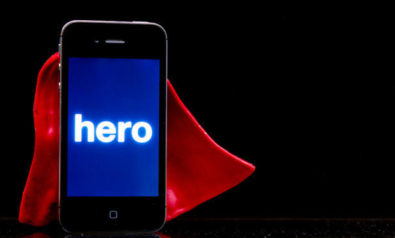An approach to how technology evolves having internet as its main driver
The (number of) technological breakthroughs that we have witnessed in the last thirty years is impressive, to say the least. The rate of the development is rising constantly; not only we advance more and more in shorter periods of time, but the impact of new technology in our daily lives is also greater than ever. The pace is incredible. By the time you think you have grappled with the ultimate piece of equipment, or you finally have the money to buy it — before you can even brag about it to your friends — a new state-of-the-art piece is out. You won’t be able to survive without it in the future — or for the next three days until the new version arrives.
It is true that after a while, even those who react badly to such pace, will sooner or later become familiar with the inventions that survive the frailty of the “the new best thing we just invented” spotlight. One just needs to remember the way computers were introduced into our lives in their infancy. The “you-need-to-be-a-rocket-scientist-to-understand-this” stereotype gave way to something so familiar to us that we cannot live without it anymore. However, that does not mean that we really understand it any better. Certainly we have more technological “user” skills which allow us to go from one invention to another without difficulty. But this is the result of how quick the transitions are and not because we have full understanding of what we are dealing with. The majority of us (with the exception of those who study or work in this particular field) are not able to grasp clearly what lies behind each major technological invention. In fact, even if we have a blurred notion that it all comes down to some language of zeros and ones, microchips and nanothings, in the end, it is a matter of “what can I do with it?” Or “who do I have to call when it stops working?” Many people consumed by the fury of waiting for more than 30 seconds for an internet page to load, still think that it is the result of a conspiracy someone or something has planned against them. We have all been there.
The difference with previous generations goes far beyond being in awe of all the marvels that have come since the invention of the remote control. The difference is found in how much quicker we adapt and learn today; we are somehow obliged to keep up with the technological roller coaster. If we have become faster learners, it has had peculiar effect on the way we behave towards new objects. Struck by a sort of “attention deficit hyperactivity disorder pandemic”, everything which takes a bit more time to understand is easily labeled as boring and what is important is the next “big” thing. It is the culture of pure novelty where objects that are histrionic in nature are supposed to bring peace to our annoying inner voice. Now, this could certainly lead us to deeper analysis of how technology is radically changing old paradigms. But we are focusing on how this is actually a necessary part of the evolutionary process underpinning technological life. Many claim there is the danger that this process may be leading our technological “priorities” into mediocrity. Indeed, there is a gap between the advancements we actually need and the market/user dynamics. The mediocrity, however, is a part of the whole advancement process. It is a sort of “natural selection”, where survival of the fittest means “survival of the technology we really need because of the circumstances we’ve found ourselves in, although we have lost a lot of time with useless and mindless things in-between”. Hence, throughout this ongoing process, technological evolution relies on the combination of the two maxims: “let us try it because it makes sense” and “let us try everything we can, just in case it makes money”.
My Cool Tattoo is Ringing
We will always witness paradoxes stemming from this dichotomy. What we actually need will always be accompanied by “cousins that did not make it”. Cell phones are a marvelous example of these kinds of oxymora. A cell phone is an extremely powerful piece of technology. Around the world, people have small devices in their pockets “garnished” with GPS, internet access, cameras, music and so on. The value of it is indisputable. And its merits go beyond individual use. In Haiti, for example, cell phones were used to track information about cholera infections. Cholera is highly contagious and can kill within 24 hours when you are infected. The same happens in Cambodia, where texts messages are used to report malaria outbreaks.
Nevertheless, along with the useful features these magical walkie-talkies have given us, other adaptations have emerged from the evolutionary process. We have smartphones which vibrate to warn us of an incoming call or a new message. This, however, is not enough. It seems that Nokia is now developing tattoos with magnetic ink which will alert us of calls or messages on our smartphones. They call it “haptic communication”.
The idea is to have a smartphone which generates a magnetic field thereby producing magnetic waves which the tattoo will receive. When the tattoo receives these waves it creates a tactile sensation on our skin, which warns us of incoming data. Plus, acting the same way a ring tone does, a different “feeling” can be worked out so the user knows who’s calling.
It couldn’t be quicker or more private. If it vibrates in your pocket, you don’t know what or who is it. You have to look at it, which as we know, requires a huge amount of effort. This new feature allows you a totally passive acknowledgement — your body vibrates! And no one will know. And those who aren’t so keen on having their bodies tattooed could wear it like a sticker. Passive is the word one should take notice of here. Instead of making gadgets easier to use, we are focusing on making them dormant. Moreover, we still do not understand fully what it is, but thank God we will do less! Like the title of a beautiful Pink Floyd song, it is the sense of being “comfortably numb” (only changed by a tattoo going crazy when you are receiving a lot of calls and messages simultaneously which you might confuse with some sort of rash which is annoying you).
Umbrella 0.2v
In the particular case of cell phones, it is evident that together with the clear advantages they have given us, other less inspired ideas will also come along. Still, this also happens with other very different kinds of technology where, despite improved features, different models share the same common denominator. Let’s then take as an example the glorious world of…umbrellas.
Little has changed in 4000 years of the umbrella’s history. One would think that by now it would be a subject matter where time would be synonymous with high technology. Yet, if you do a quick web search to look for the great advancements in “umbrellaology”, it will not be so easy to find wonderful achievements nor major investments or companies fighting for patents. The technological development of umbrellas skipped that part; it is the “missing link” in the umbrella’s evolution. Nonetheless, there are some options to contemplate. When considering state-of-the-art umbrellas, several models have been proposed in recent years but none of them are radical in the way they protect us from rain. The majority have cool features or fashionable, personal touches to give them an edge. Although some companies offer “new wind resistance technology”, in the end they are just selling fashion statements which will keep you dry if the elements are not so aggressive.
The LightDrops umbrella designed by San-Kyun Park, for example, turns drops of rain into light. It does so by a conductive membrane that converts the kinetic energy of the falling water into electricity. This electricity powers the LEDs inside the umbrella’s canopy. If the wind blows a bit stronger, it will definitely turn inside out, but hey, no one can deny that this is an umbrella where style meets renewable energy. Following similar principles you will find umbrellas whose handles are blue tooth accessories or even the Tandem umbrellas designed by Jasmine Rasnahan, where two canopies were added for “lovely and cozy protection”.
Of course these models are cast aside when Japanese researchers decide to enter the umbrella technology game. The Okude laboratory in Tokyo’s Keio University has developed a high-tech umbrella which features, who would guess, an integrated digital camera, built-in Wi-Fi and a video projector. Yes, a video projector. No more dull rainy days. Snap an image, upload it to Flickr or YouTube and see it above your head. The prototype has been called “Pileus”. However, if you are going to walk around with your umbrella and constantly looking up into the inside of it, it might be a good idea to wear some sort of protective clothing, because you will certainly bump into someone or something quite often. For those like me who often forget their umbrellas somewhere else, this model will require much more care.
What about an umbrella that does not have any top notch technology; one that does not allow you to tweet or upload but really provides the state-of-the-art protection against rain and wind? That won’t be so easy to find. An object which was designed to fulfill one of our most basic needs — protecting us from a meteorological phenomenon which occurs often — has not been the subject of intense research. And, when it did become the focus of research, what did we done? We put internet on it.
What does this really mean? It mainly asserts that the internet is, at the moment, the strongest gene in the gene pool of technological evolution. It may happen that it will soon swallow all other technologies and we won’t talk about radio, television and the like, but simply of the web. In the process, vibrating tattoos and built-in cameras will all come along with it. Indeed, the symbol of technological advancement in the objects we need and use in our daily lives has become reduced to: “does it have internet?” This, however, would not be such a bad sign if the real purpose would be focus on fast access to important information. The truth is the question “does it have internet” actually means: “can I upload, tweet or make virtual friends with it?”
The views expressed in this article are the author's own and do not necessarily reflect Fair Observer’s editorial policy.
Support Fair Observer
We rely on your support for our independence, diversity and quality.
For more than 10 years, Fair Observer has been free, fair and independent. No billionaire owns us, no advertisers control us. We are a reader-supported nonprofit. Unlike many other publications, we keep our content free for readers regardless of where they live or whether they can afford to pay. We have no paywalls and no ads.
In the post-truth era of fake news, echo chambers and filter bubbles, we publish a plurality of perspectives from around the world. Anyone can publish with us, but everyone goes through a rigorous editorial process. So, you get fact-checked, well-reasoned content instead of noise.
We publish 2,500+ voices from 90+ countries. We also conduct education and training programs
on subjects ranging from digital media and journalism to writing and critical thinking. This
doesn’t come cheap. Servers, editors, trainers and web developers cost
money.
Please consider supporting us on a regular basis as a recurring donor or a
sustaining member.
Will you support FO’s journalism?
We rely on your support for our independence, diversity and quality.












Comment